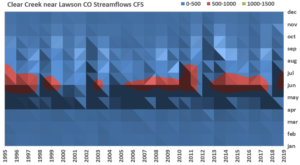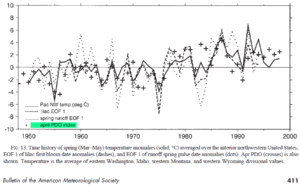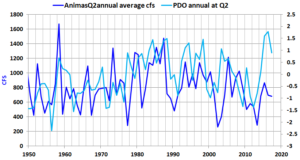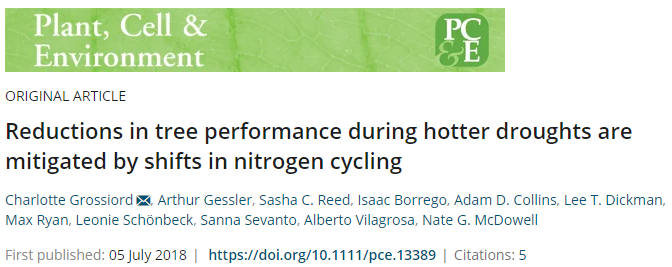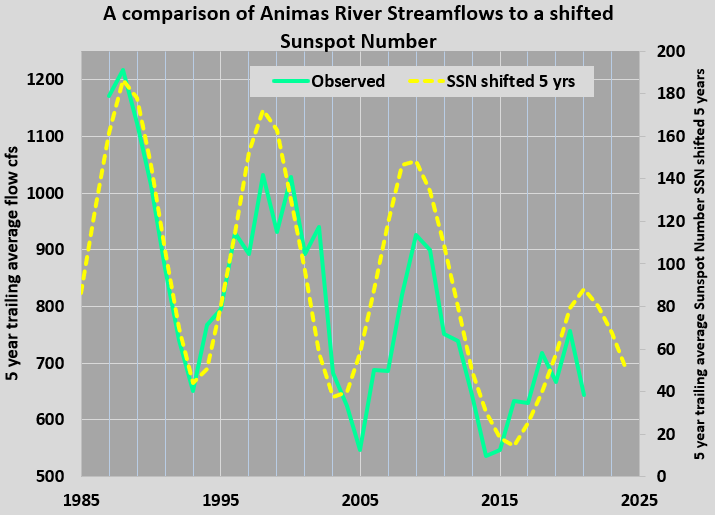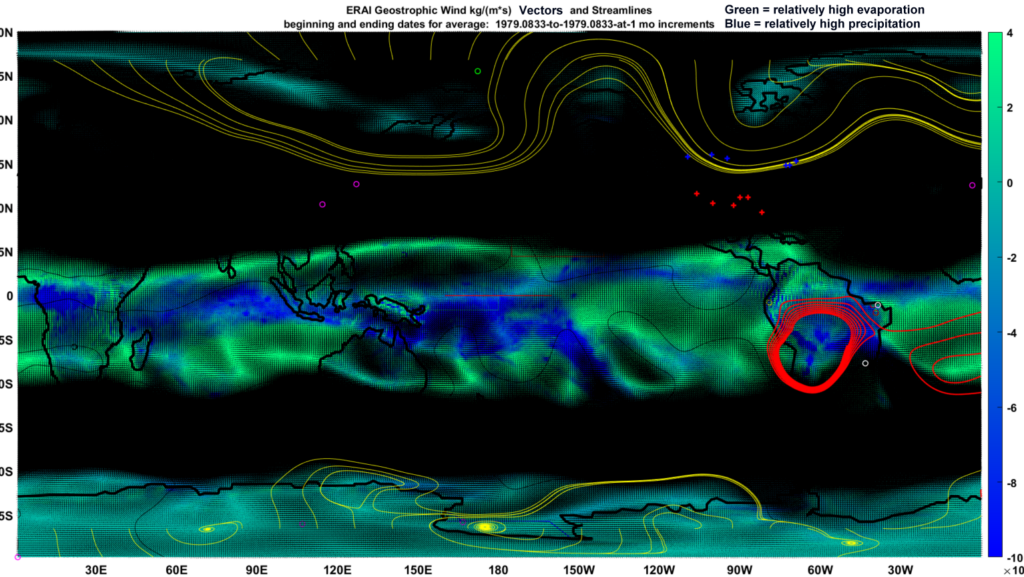
Have Climate Scientists Dropped the Early Spring and Massive Tree Mortality Memes?
This is an opinion piece.
In November, 2019 I wrote much of the post below. I recently wondered what became of these featured memes and so am picking up where I left off, starting with a more condensed recap. The Early Spring (ES) related assertions first that the entire world is warming, and second that the warming world is causing high mountain snows to melt earlier every year, and third, that this is solely due to fossil fuel emissions, appear to be unsupported by evidence. And paired with that Early Spring claim is the massive tree mortality (MTM) meme. This alarming meme claims that high altitude conifers will soon be extinct across the US, purely due to anthropogenic fossil fuel emissions. For what it is worth, I also recognize that many streams in the Western US are diminishing in flow. I’ve published on this myself along with a Solar reason [4], which I’ll return to near the end of this post.
HAS THE EARLY SPRING MEME COME TO AN EARLY END?
It is true that over 3,000 scientific papers, as well as many media promotions, along with more than a few universities, NGOs, and state institutions, at least cite the anthropogenic Early Spring meme as if it were a fact. Most of the recent citations appear to be oblique. I.e., the meme is given as a background item while the papers focus on other things. In other words, there are few if any recent papers that document regionally expanding regions where Spring is spent earlier than in the past. And given the data, this is not surprising. At least for the western US, the ES meme continues to be repudiated by simple, direct, high-quality, continuous, and long-term streamflow records.
Streamflows are what the Early Spring meme is truly about. After all, the streamflow record has long been and always will be an unparalleled proxy for the hydrologic health of any watershed. And these records appear to also repudiate MTM alarmism. The memes takes one down to a despairing level:
- Using fossil fuels, or breathing at least? Then more CO2 makes the planet warmer and this makes the snows melt earlier every year.
- Snow gone earlier in the year? Then much less streamflow, coupled with more rapid aquifer depletions.
- Less streamflow? Then accordingly, less water.
- No water? Say goodbye to conifers and fish, honeysuckle and lilacs, birds and bears, as well as industry, communities and irrigated agriculture. Even say goodbye ultimately to agriculture that relies upon groundwater rather than surface water.
On the other hand, the actual evidence suggests something different. Consider the simple image above for Clear Creek outside of Golden, CO. The horizontal (mostly red) “ridge” of the semi-3D contour plot represents the peak flows of that stream on a monthly averaged basis, for any given year. January flows are represented by the bottom row and the top row is naturally December. The columns represent each year, starting in this case in 1995.
The ridge signifies that peak streamflows customarily occur in June, if not later. The peak values for the Clear Creek case typically exceed 500 cubic feet per second (cfs). This is quite impressive for such a narrow channel, but that is par for the central and steep eastern Rocky Mountains. I visited this stream earlier in the year (2019) during a March blizzard. It was spellbinding to see the ice-laden flows along that stream in Golden, Colorado. I know that this observation itself is a supporting anecdote which challenges the Early Spring meme. But I don’t need to rely on anecdotes, given that the data is so comprehensive.
Because of the mostly consistent snowfall and subsequent melting patterns, the peak flow month for Clear Creek is always June, with a few exceptions for dry years, where it doesn’t matter and for this year 2019 when the peak is actually reached later, in July. In other words, there is no trend down towards an earlier month such as May for peak flow. Also there is not a trend up towards a later peak flow month such as July. Because there is no trend, and because the peak month is almost always June, any hydrologist would have to agree that in our jargon-filled world, the peak flow pattern is stationary.
One stream time series doesn’t begin to capture the evidence easily available to confirm that peak flows from spring runoffs have not shifted backward in time. Here below are flow series for 7 different streams in a slightly different representation : Animas River near Farmington, NM; Otowi gage of Rio Grande, NM; Big Lost River, Idaho; Kern River near Onyx, CA; Big Thompson River near Loveland CO; Cache La Poudre River near Box Elder, CO; and Lake Fork River, Utah. That’s not a bad cross section of the Western US in my view but any are welcome to try others. The colors define the magnitudes of flows for any given month. The green colors represent the peak flows for any given year. The values are still in CFS (cubic feet per second). In these frames, January is placed at the top row and December is placed at the bottom.
Animas River near Farmington, NM;
Big Thompson River near Loveland CO;
Cache La Poudre River near Box Elder, CO;
Big Lost River, Idaho;
Lake Fork River, Utah;
Otowi gage of Rio Grande, NM; and
Kern River near Onyx, CA.
Simply from a visual examination, one can easily determine that none of the streams, which are scattered across the western US (and associated with the most important watersheds including the Snake River, the Colorado River and the Rio Grande), are clearly trending towards later or earlier peak flow months. Some happen to have naturally consistent peak flows in May, some as late as July, and some have no clear peak month. Trust your eyes if you trust the data. If you don’t trust my development of the data, the USGS resource [1] gives you everything needed to corroborate independently. There is no trend for any of these streams.
And yet, over 3,000 peer-reviewed scientific papers apply pressure that we should not believe the data or our own eyes. Here is a Google Scholar report which links the 3,000 plus citations to the Barnett et al. paper which can be credited for getting this Early Spring snowball rolling:
Potential impacts of a warming climate on water availability in snow-dominated regions
TP Barnett, JC Adam, DP Lettenmaier – Nature, 2005 – nature.com
All currently available climate models predict a near-surface warming trend under the influence of rising levels of greenhouse gases in the atmosphere. In addition to the direct effects on climate—for example, on the frequency of heatwaves—this increase in surface temperatures has important consequences for the hydrological cycle, particularly in regions where water supply is currently dominated by melting snow or ice. In a warmer world, less winter precipitation falls as snow and the melting of winter snow occurs earlier in spring …
To be clear, the Early Spring meme starts more or less with this paper by Barnett, Adam and Lettenmaier [2], which relies only upon references to other papers and models and yet asserts with confidence that:
- Greenhouse gases will cause “a greater frequency of warming”, and
- “in a warmer world, less winter precipitation falls as snow and the melting of winter snow occurs earlier in Spring”. and
- “Even without any changes in precipitation intensity, … these effects lead to a shift in peak river runoff to winter and early spring, away from summer and autumn when demand is highest.” and finally
- “..the consequences of these hydrological changes for future water availability — predicted with high confidence and already diagnosed in some regions — are likely to be severe”
I’ve somewhat carefully scoured this critically influential paper, published nearly 15 years ago. I note that no figures are provided to reinforce their assertions. There is a figure that shows the obvious fact that streamflows often are associated with snowmelt. There is another figure about the “Trade-off between firm hydropower and stream-flow requirements”, and finally there is an anecdotal before-and-after photo of a Peruvian glacier.
There are no other figures and there are no tables within this paper. There is no supplemental material either. Accordingly, there is no data or information within the premier study which support any of the bullets above. Perhaps there is supporting information in the references. But already this is a red flag. The conclusions of any paper must be directly supported in the same paper and not by reference.
I’ve explored a few of the 3,000 + references which might support. I start for context with an interesting precursor paper [3], coauthored by Dr. Danial Cayan, a researcher whom I had communicated with a few years ago. As shown in the following equivalent Google Scholar citation entry, the original work by Cayan et al. on the Early Spring never actually used that term. Nor did it immerse the topic in fear. Perhaps that’s why it hasn’t received as many citations as the Burnett et al paper.
Changes in the onset of spring in the western United States
DR Cayan, SA Kammerdiener… – Bulletin of the …, 2001 – journals.ametsoc.org
Fluctuations in spring climate in the western United States over the last 4–5 decades are described by examining changes in the blooming of plants and the timing of snowmelt–runoff pulses. The two measures of spring’s onset that are employed are the timing of first bloom of lilac and honeysuckle bushes from a long-term cooperative phenological network, and the timing of the first major pulse of snowmelt recorded from high-elevation streams. Both measures contain year-to-year fluctuations, with typical year-to-year fluctuations at a …
Although I’m no fan of his later promotions, I liked Dr. Cayan’s early work, including that paper as well as another which explores streamflow connections to ocean index drivers. I favor Cayan et al’s Spring Onset paper because of its open-minded approach to a simple question: Are the timing of snowmelts in the Rocky Mountains changing? They include a survey of some evidence on the timing of honeysuckle and lilac flowering. They (amazingly) follow with an exploration of connections of Rocky Mountain moisture to the Pacific Decadal Oscillation (PDO). The similarities given the limited data his author team examined appear striking. I’m including this image of their PDO comparison, followed by one I independently developed from a prior Early Spring post. First here is Figure 4 from the Cayan et al. 2001 paper:
Next, here is a PDO vs the Animas River streamflow time series from a 2018 post of mine. Clicking on this image will link you to the pdf file of greatest relevance within that post:
In my paper [4] which features the Animas River, I have gone further and found a more compelling relation directly to Solar Cycles. But that only helps to corroborate in my view that the PDO itself is driven ultimately by the Sun. Returning to this Early Spring notion, would you believe that the PDO connection of Cayan et al. cannot be found anywhere in the Barnett et al paper? It’s true, and I encourage any interested reader to confirm on their own. Perhaps that oversight is what allowed thousands of alarming papers to flower on this topic, because if the PDO were attributed, the alarm over fossil fuels would have no berth.
Obviously there is neither room nor time to survey every one of the thousands of papers, and I don’t claim to have done that. But I’ve profiled a few as promised. Here are some brief synopses in a table.
| Selected study title, reference, and year | Take-Away Messages |
| DECLINING MOUNTAIN SNOWPACK IN WESTERN NORTH AMERICA [5] 2005 | “The West’s snow resources are already declining as the climate warms” |
| Changes in the Timing of Snowmelt and Streamflow in Colorado: A Response to Recent Warming. [6] 2010 | “..strong, pervasive trends in snowmelt and streamflow timing, which have shifted toward earlier in the year by a median of 2-3 weeks over the 29-yr study” |
| Climate Change in Colorado. A Synthesis to Support Water Resources Management and Adaptation. 2nd Ed. [7] 2014 | “The timing of snowmelt and peak runoff has shifted earlier in the spring by 1-4 weeks across Colorado’s river basins over the past 30 years..” |
| Confronting Climate Change in New Mexico. Action needed today to prepare the state for a hotter, drier future. [8] 2016 | “New Mexico’s climate is getting hotter and drier, driven by regional and global warming trends. This means earlier springs, hotter summers, and less predictable winters” |
| Trends and Extremes in Northern Hemisphere Snow Characteristics. [9] 2016 | “..the trend towards earlier spring snowmelt, particularly at high latitudes..” |
| Water and life from snow: A trillion dollar science question [10] 2017 | “Snow..is changing due to global warming in worrisome ways” and “The snow that does fall is melting sooner, producing earlier stream runoff ..” |
| Collaboratively Modeling Reservoir Reoperation to Adapt to Earlier Snowmelt Runoff [11], 2020 (that’s right!) | “..researchers demonstrate that under a warmer climate, earlier peak streamflow compromises reservoir storage” |
The above section on Early Spring was originally posted in November 2019. And now in 2021, there don’t appear to be recent papers (which are not heavily pay-walled) which document a globally expanding pattern in which Spring streamflows are happening earlier in time than the natural pattern.
HAS THERE BEEN A MASSIVE DIE-OFF IN Massive Tree Mortality RESEARCH AND PROMOTIONS?
Yes, there has. Until about 2015, a brash path was cut across academia, research institutions, and media, with highly publicized claims not only that massive conifer mortality was imminent, but also that those who questioned the notion were “Deniers” of climate change. Then in following up on these MTM and denier assertions, I came across a 2015 Rolling Stone article:
“https://www.rollingstone.com/politics/politics-news/the-fate-of-trees-how-climate-change-may-alter-forests-worldwide-105316/”
In which the architect of the MTM is quoted:
“The Southwest is going to be a grassland, with the occasional rare tree”.
And an associated Sierra Club report: “http://www.riograndesierraclub.org/local-climate-change-guru-hits-rolling-stone/” where they appear to quote or paraphrase the same MTM researcher:
“The effect of global warming and drought on tree physiology is often ignored or even unknown by not only climate deniers but..”
And I looked into the actual research publications, such as this one in NCC:
I learned that their tree-killing experiments didn’t actually prove massive die off was imminent. Rather, they proved what gardeners, farmers, botanists, and virtually every aware person has always known: If you withhold water from a tree, it will die. The rest of the MTM assertion, that die-off would be due primarily to anthropogenic fossil fuel emissions, appeared to be solely based on the usual global circulation climate change models. And the authors didn’t perform those model exercises. Did I mention that the conclusions of any paper must be directly supported in the same paper and not by reference? Typically, peer review processes screen such practices out, but not with this paper or with Barnett’s above. Did I mention that these models are not actually calibrated anyway? Buried deep within their gears are acknowledgements (of so called “reinitializations”) that each simulation is reset each year to match the data. That’s cheating.
After I first learned of these memes, I wrote a post or two and reached out to some of the top proponents to share my own hydroclimatological observations and concerns with their work. And naturally, Crickets. But my auto-climate-disaster news feeds have seemed to go dormant on this topic lately, so I have taken a quick look. Here is an example of a new paper by some of the same old authors, who now state in their abstract:
“global forests are tending toward younger stands”
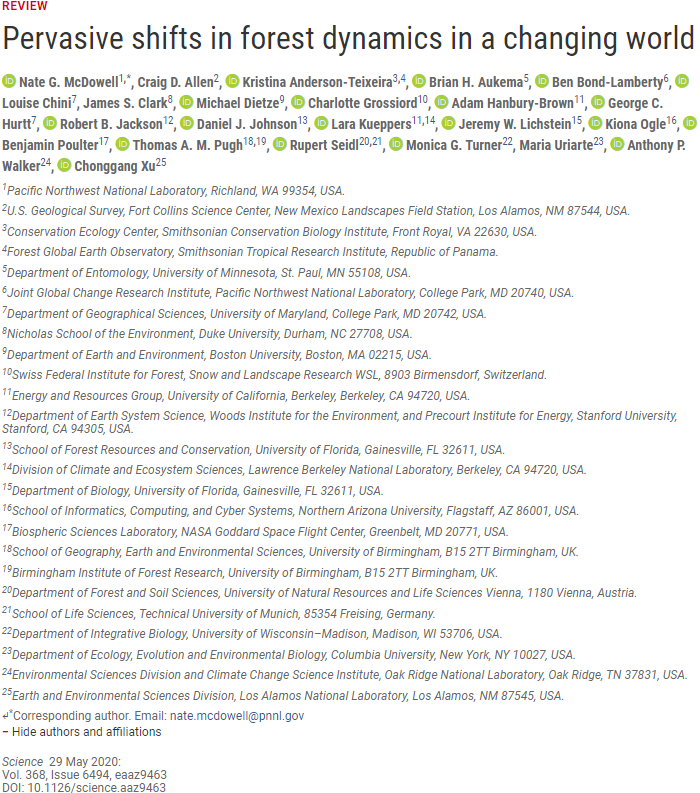
If massive tree die-off is imminent in two decades, why then would so many young conifers be popping up everywhere? In addition to the about-face, if you actually download and read the paper and any associated media, you might notice the new subdued narrative. No “denier” interviews with the Rolling Stones or the Sierra Club, or the New York Times any longer. No confident assertions of MTM. Rather, natural processes are quietly restored as a significant player. And the researchers appear to acknowledge what any New Mexico mountain visitor can clearly see: the brash upstart emergence of new conifer saplings, almost everywhere that such trees have long been growing.
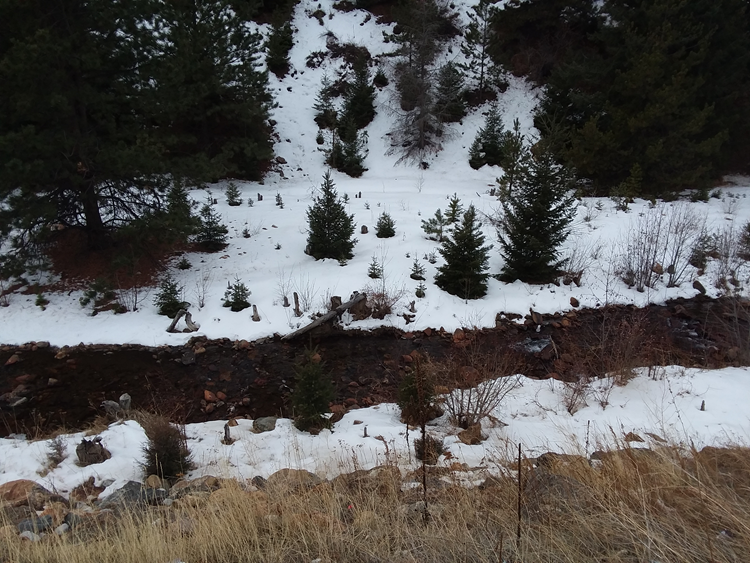
Naturally some rationale must explain this rapid turn in the narrative, so this final paper comes to the rescue. Nitrogen adjustments are attributed to make the trees more drought tolerant.
So there you have it. Nothing to worry about regarding MTM any longer. Even its chief architect no longer appears to support. It’s also somewhat interesting that author-ordering-wise, the first has become last. But it’s not that interesting. I’m more keen to understand WHY these two alarming memes, the Early Spring, and the Massive Tree Mortality, fueled by a juggernaut of media publicity and public policy, apparently burned out virtually overnight.
Maybe my paper [4] really did have something to do with it. Here’s a development from that paper, which I featured in a recent post. My paper posited that Solar Cycles are the primary cause of moisture fluctuations and droughts in the Southwestern US and other mid latitude watersheds sustained by high altitude mountain catchments. The cycling of total solar irradiance (TSI) has an eye-popping similarity (a high correlation) to the streamflow records of for example the Animas River (also featured above), which emerges from the Southern Rockies and flows to the Colorado River. In this image I’ve simply shifted the solar time series by 5 years to show how it overlays with the Animas. And yes, that signifies a 5 year lag of global circulation between the solar forcing and the resulting streamflow pattern.
The strange thing about my paper [4] was that I originally submitted this information to the respected Hydrological Sciences Journal in late 2016. It wasn’t published until early 2019. That’s a rather long time for other things to happen. For example, UNM faculty cancelled my dissertation, which covered exactly the same material, over that time gap. Accordingly in my view at that time, it seemed that nothing could prevent those memes from further metastasizing until the entire world drowned in yet two more irreproducible, totalitarian nightmares. If any are interested in such nightmare reflections, they are welcome to visit CSIM (tumblr.com).
Perhaps over that period and since, other things have happened that wouldn’t normally come to light. It seems logical that with the solar – streamflow causation now in the published record, that any scientist hoping to publish on the two Memes above, targeting watersheds of the Western US, might encounter an unpleasant roadblock within the quiet peer review process. It would certainly make sense to me at least. And since such scientists are not likely keen to change direction, this might explain why nonetheless, the publication of [4] is hardly cited by any to this day.
Summary
The Early Spring and Massive Tree Mortality assertions appeared authoritative and urgent, simply by virtue of thousands of peer reviewed papers, estimates of trillion dollar impacts, high profile media coverage, as well as projections of imminent apocalyptic scenarios. The actual streamflow evidence demonstrates that the Early Spring and the MTM assertions were false alarms. I wouldn’t be surprised if the notions still have a cherished place in the latest UN IPCC projections. But if so, the IPCC papers for 2021 are not likely to be citing contemporary peer review journal references for the Western US. As I said, such references seem to be missing for many years now. The alarming papers and projections appear therefore to have retreated into shadows and internet archives. Those alarms could have easily been nipped in the phenologic bud, if any had the will, by simply starting from the reproducible streamflow records featured here, and following the once-standard industry best practices of due diligence.
REFERENCES
[1] USGS 06716500 CLEAR CREEK NEAR LAWSON, CO, USGS 09364500 ANIMAS RIVER AT FARMINGTON, NM, USGS 13120000 NF BIG LOST RIVER AT WILD HORSE NR CHILLY ID, USGS 09289500 LAKE FORK RIVER AB MOON LAKE, NR MOUNTAIN HOME, UT, USGS 06752280 CACHE LA POUDRE RIV AB BOXELDER CRK NR TIMNATH, CO, USGS 06741510 BIG THOMPSON RIVER AT LOVELAND, CO, USGS 13120000 NF BIG LOST RIVER AT WILD HORSE NR CHILLY ID, USGS 11186000 KERN R NR KERNVILLE(RIVER ONLY) CA, USGS 08313000 RIO GRANDE AT OTOWI BRIDGE, NM.
[2] Barnett, T.P., Adam, J.C., and Lettenmaier, D.P. 2005. Potential impacts of a warming climate on water availability in snow-dominated regions. NATURE Vol 438|17 November 2005|doi:10.1038/nature04141
[3] Cayan, D.R., Kammerdiener, S.A., Dettinger, M.D., Caprio, J.M., and Peterson, D.H. 2001. Changes in the Onset of Spring in the Western United States. Bulletin of the American Meteorological Society (BAMS). October, 2001. DOI: 10.1175/BAMS-86-1-39
[4] Wallace, M.G., 2019, Application of lagged correlations between solar cycles and hydrosphere components towards sub-decadal forecasts of streamflows in the Western US. Hydrological Sciences Journal, Oxford UK Volume 64 Issue 2. doi: 10.1080/02626667.2019.
[5] Mote, P.W., Hamlet, A.F., Clark, M.P., and Lettenmaier, D.P. 2005. DECLINING MOUNTAIN SNOWPACK IN WESTERN NORTH AMERICA. Bulletin of the American Meteorological Society (BAMS). January 2005. DOI: 10.1175/BAMS-86-1-39
[6] Clow, D. W. 2010. Changes in the timing of snowmelt and streamflow in Colorado: A response to recent warming. Journal of Climate 23(9): 2293-2306. https://co.water.usgs.gov/publications/non-usgs/Clow2010_SnowmeltTiming.pdf
[7] Lukas, J. Barsugli, J., Doesken, N., Rangwala, I., Wolter, K., with contributions by Alvarado, R., Arnold, J., Averyt, K., Bardsley, T., Basdekas, L., Brekke, L., Clow, D., Day, G., Decker, K., Deems, J., Dilling, L., Easley, T., Finnessy, T., Gangopadhyay, S., Gilmore, A., Gordon, E., Harding, B., Hoerling, M., Horn, B., Kaatz, L., Kuhn, E., Livneh, B., McNie, E., Melander, K., Miller, P., Molotch, N., Pielke Sr. R., Pineda, A., Prairie, A., Rasmussen, R., Ray, A., Ruiz, A., Ryan, W., Sanderson, J., Saunders, S., Smith, J., Steger, R., Stokes, M., Tellinghuisen, S., Waage, M., Wood, A. 2014. “Climate Change in Colorado. A Synthesis to Support Water Resources Management and Adaptation. 2nd Ed. August 2014. A Report for the Colorado Water Conservation Board. Western Water Assessment, Cooperative Institute for Research in Environmental Sciences (CIRES), University of Colorado Boulder”:
http://wwa.colorado.edu/climate/co2014report/Climate_Change_CO_Report_2014_FINAL.pdf
[8] Union of Concerned Scientists. Authors not listed (which is not acceptable for a science group) 2016. Confronting Climate Change in New Mexico. Action needed today to prepare the state for a hotter, drier future. www.ucsusa.org/NewMexicoClimateChange
[9] Kunkel, K.E., Robinson, D.A., Champion, S., Yin, Xungang, Estiflow, T., and Rankson, R.M. 2016. Trends and Extremes in Northern Hemisphere Snow Characteristics. Current Climate Change Reports. (2016) 2:65-73 DOI 10.1007/s40641-016-0036-8
[10] Sturm, M., Goldstein, M.A., and Parr, C. 2017. Water and life from snow: A trillion dollar science question. AGU PUBLICATIONS COMMENTARY. Special Section: Earth and Space Science is Essential for Society doi:10.1002/2017/WR020840
[11] Sterle, K., Jose, L., Coors, S. Singletary, L., Pohll, G., and Rajagopal, S. 2020 (that’s right I downloaded in 2019!), Collaboratively Modeling Reservoir Reoperation to Adapt to Earlier Snowmelt Runoff. Case Study (that’s right, an apparent case study based on a speculative model) Journal of Water Resources Planning and Management. ASCE. 146 (10: 05019021
 3192total visits,2visits today
3192total visits,2visits today
